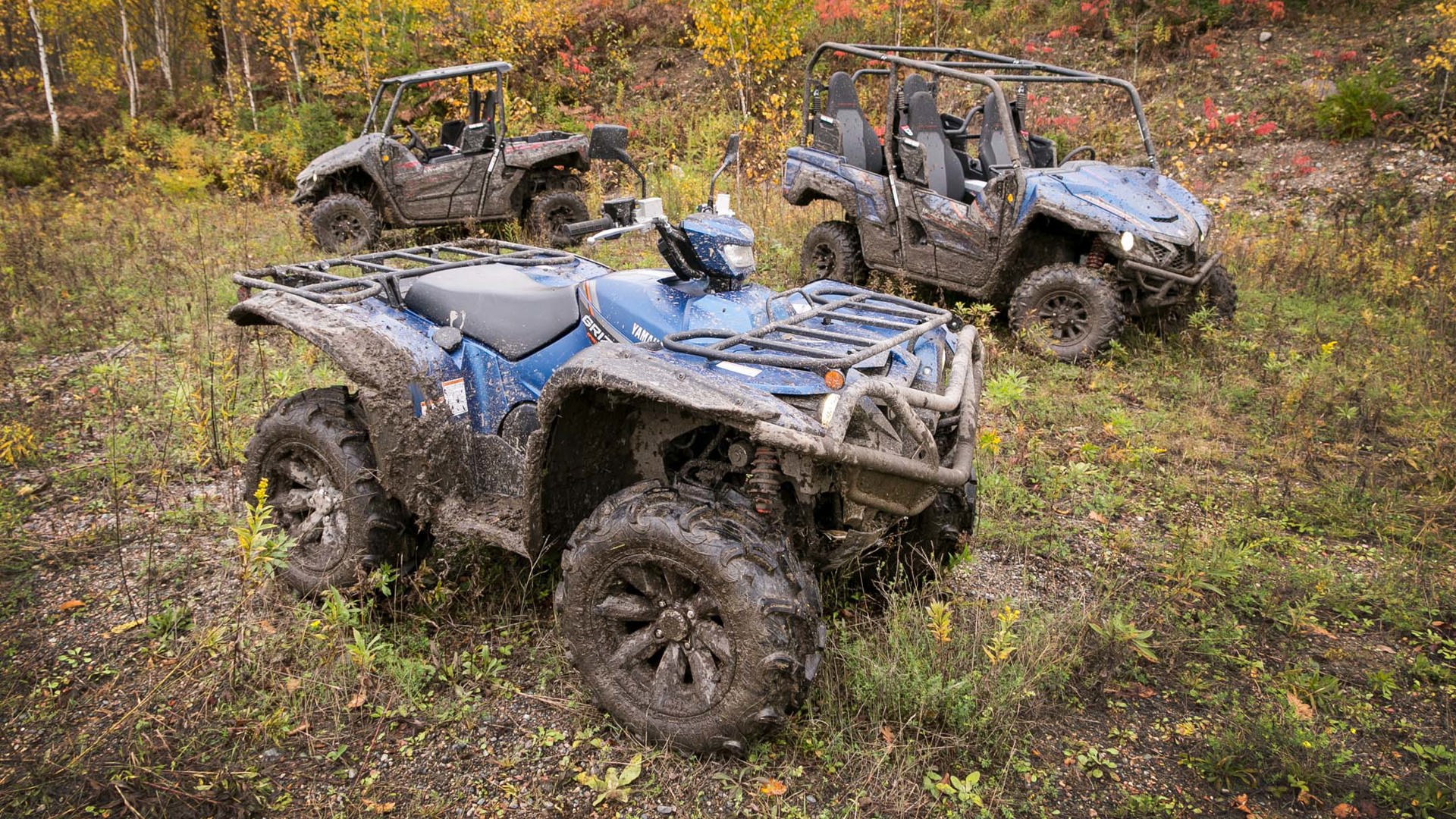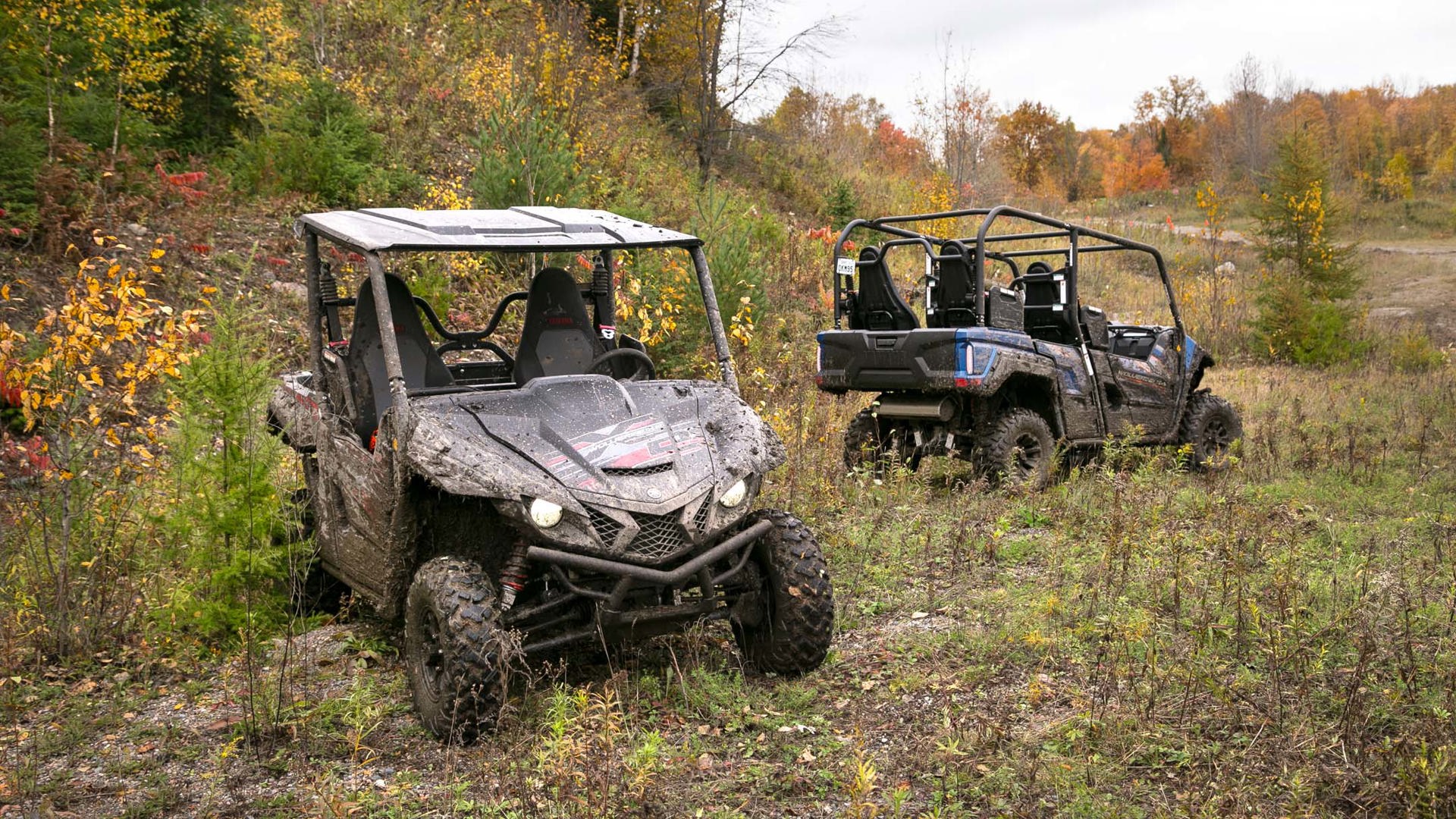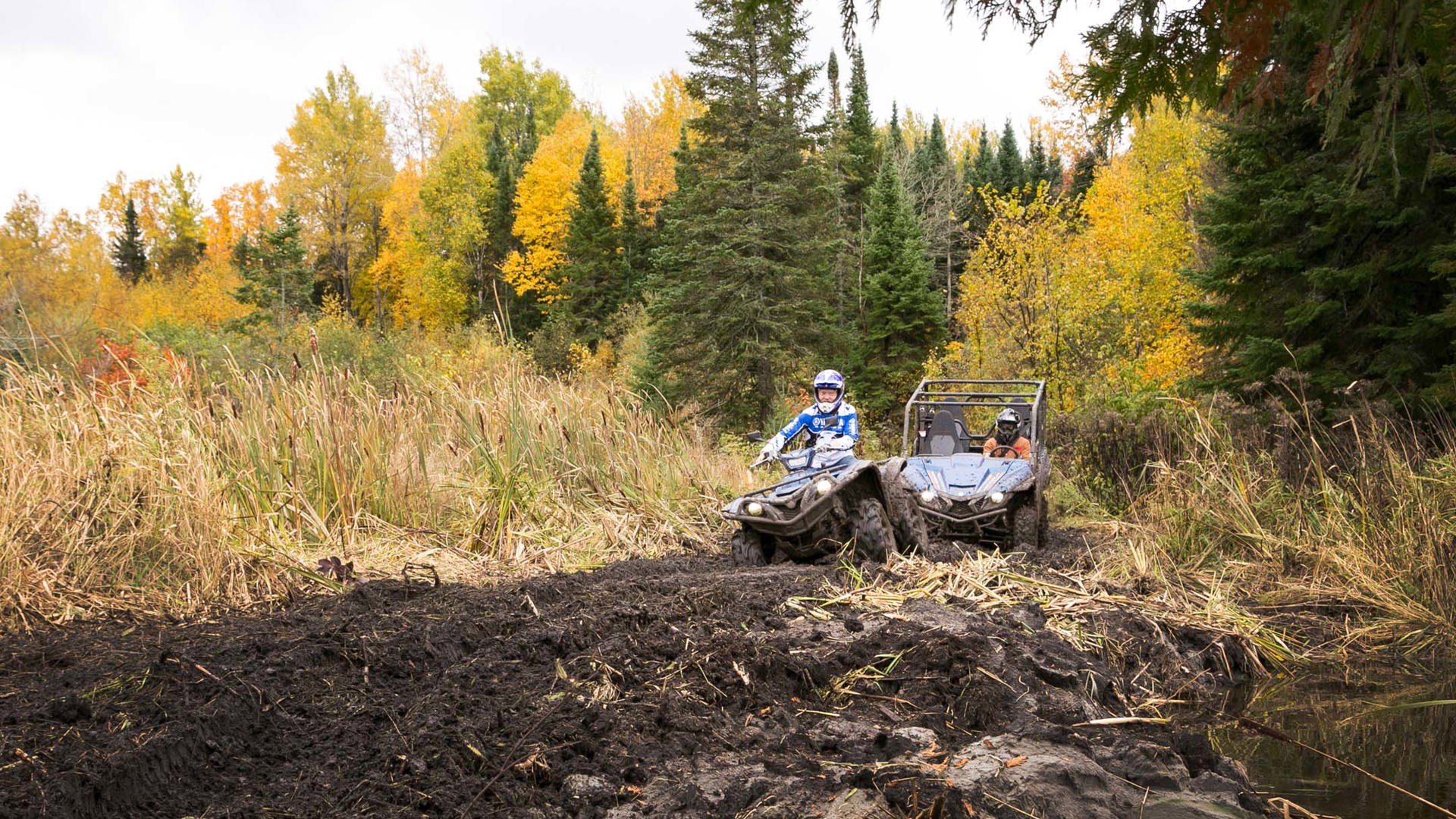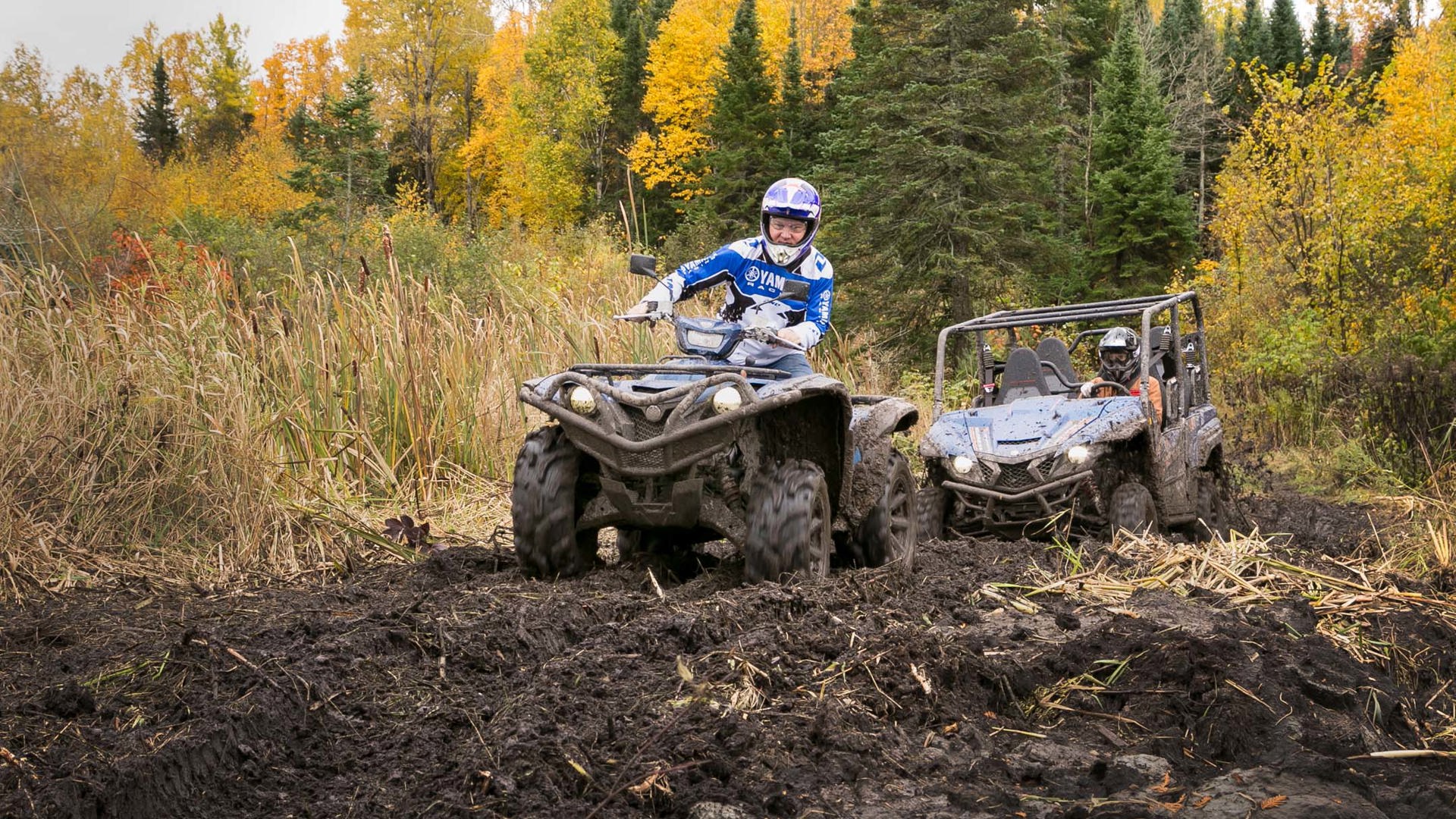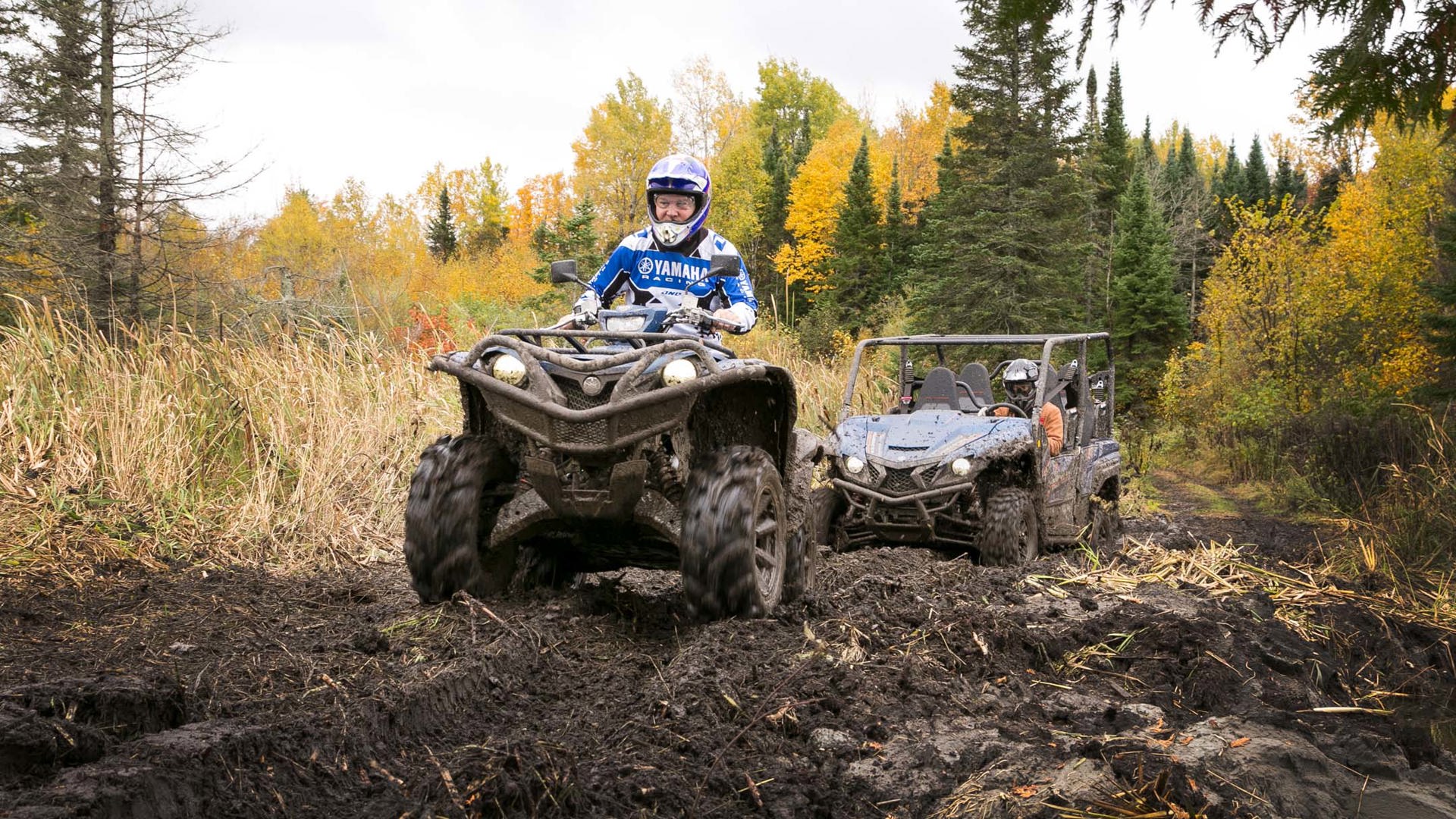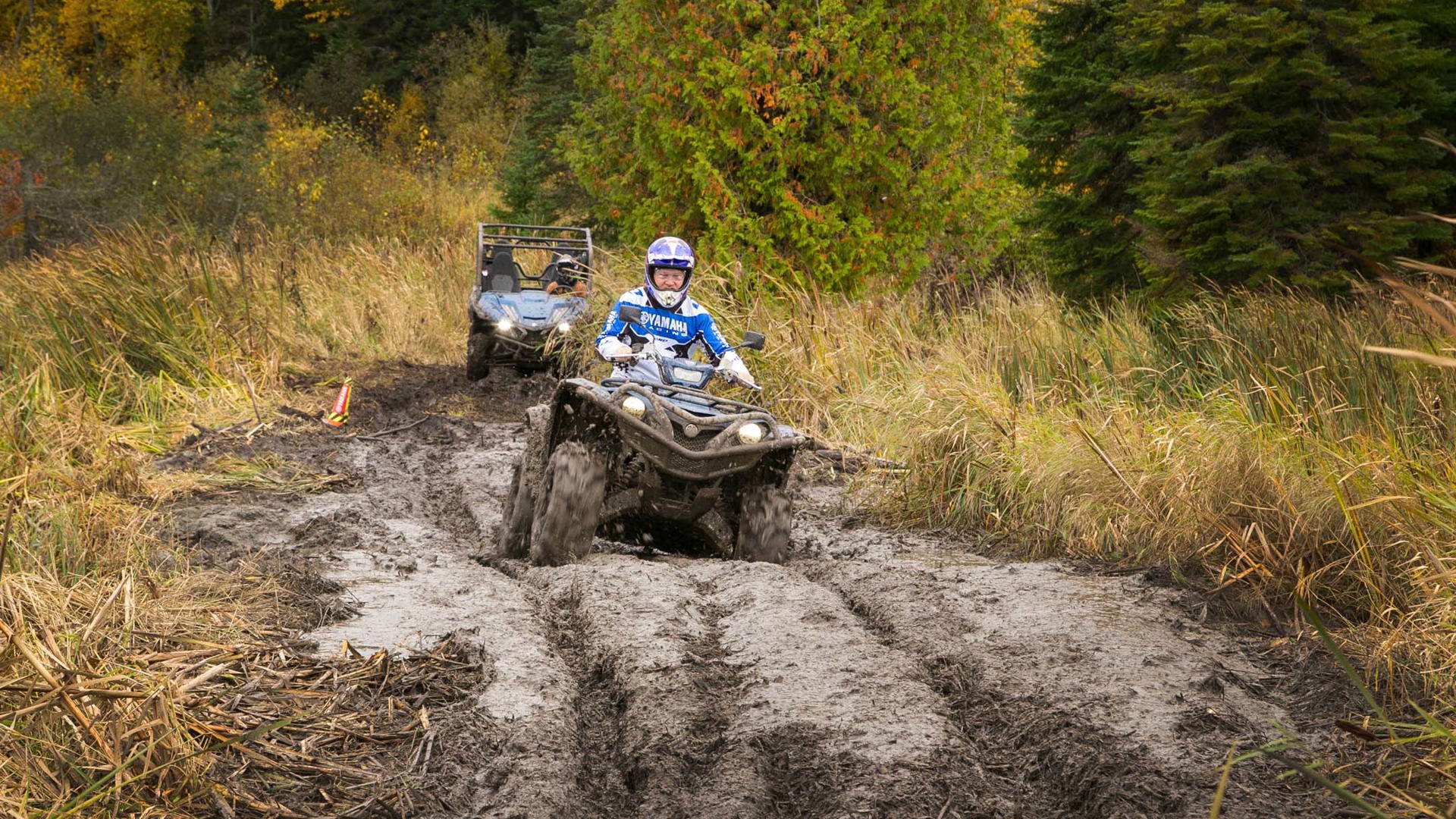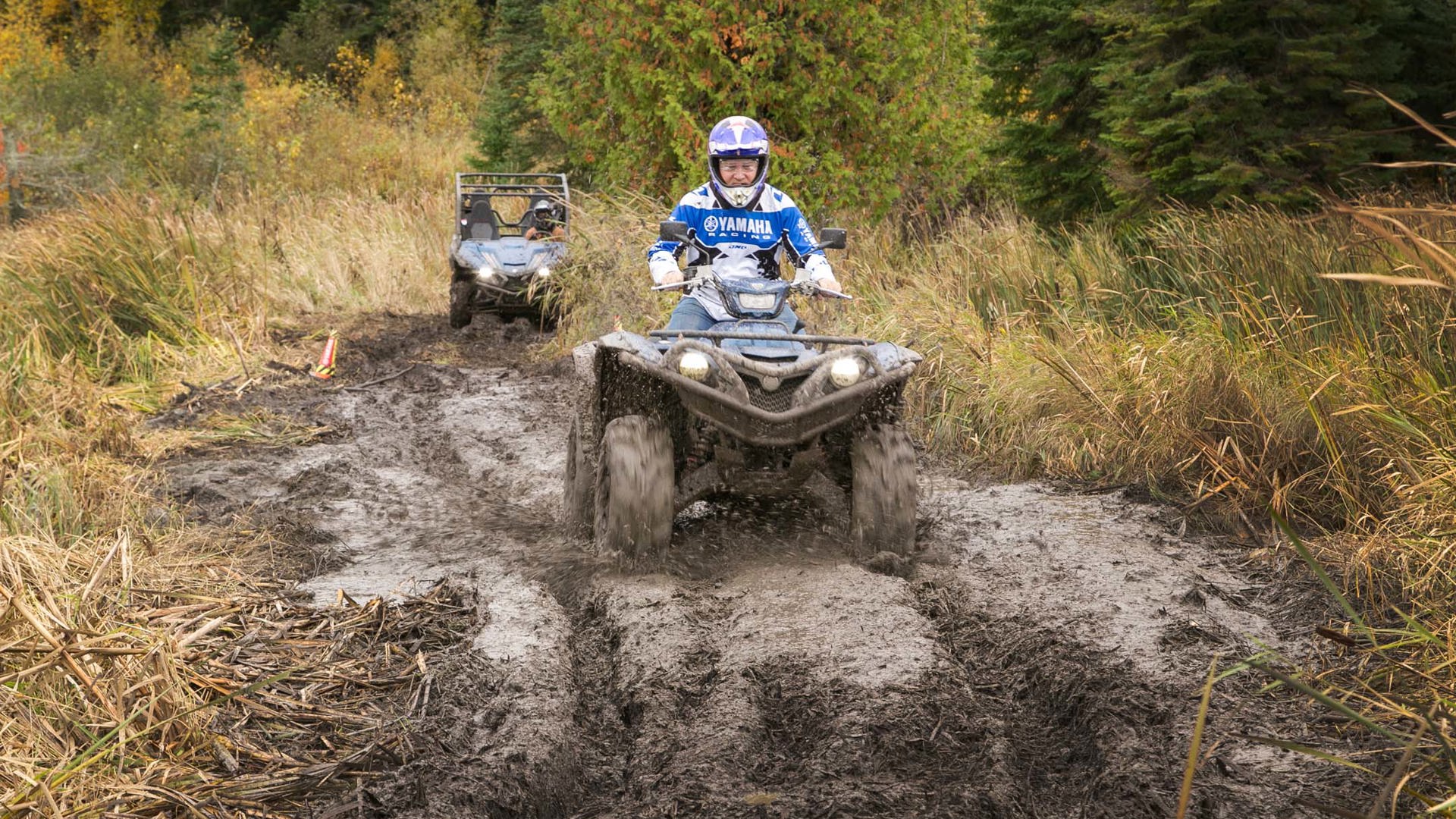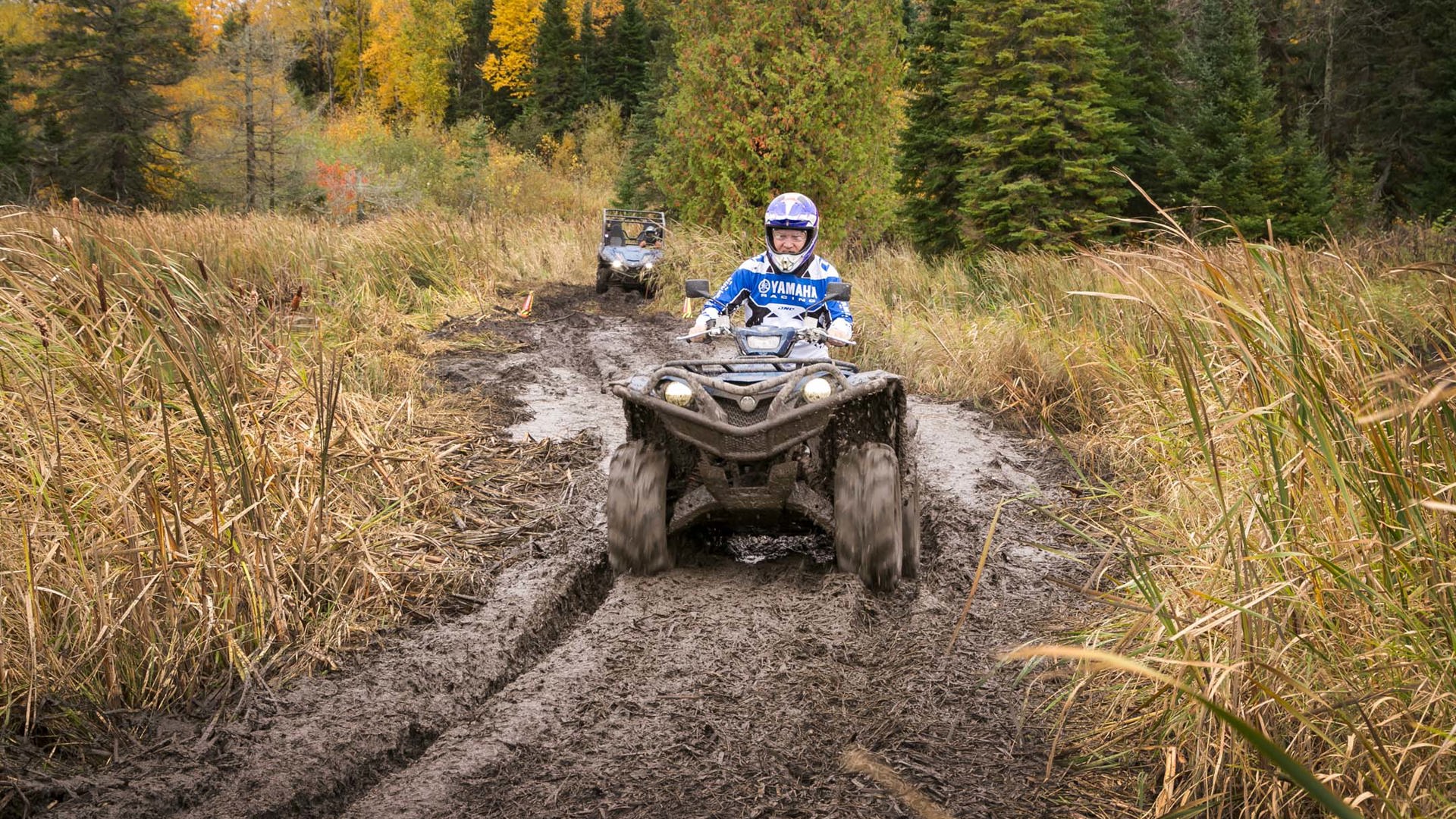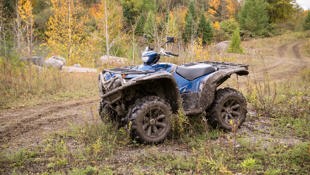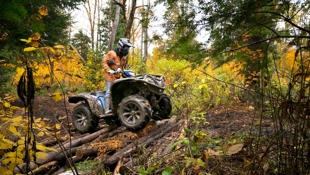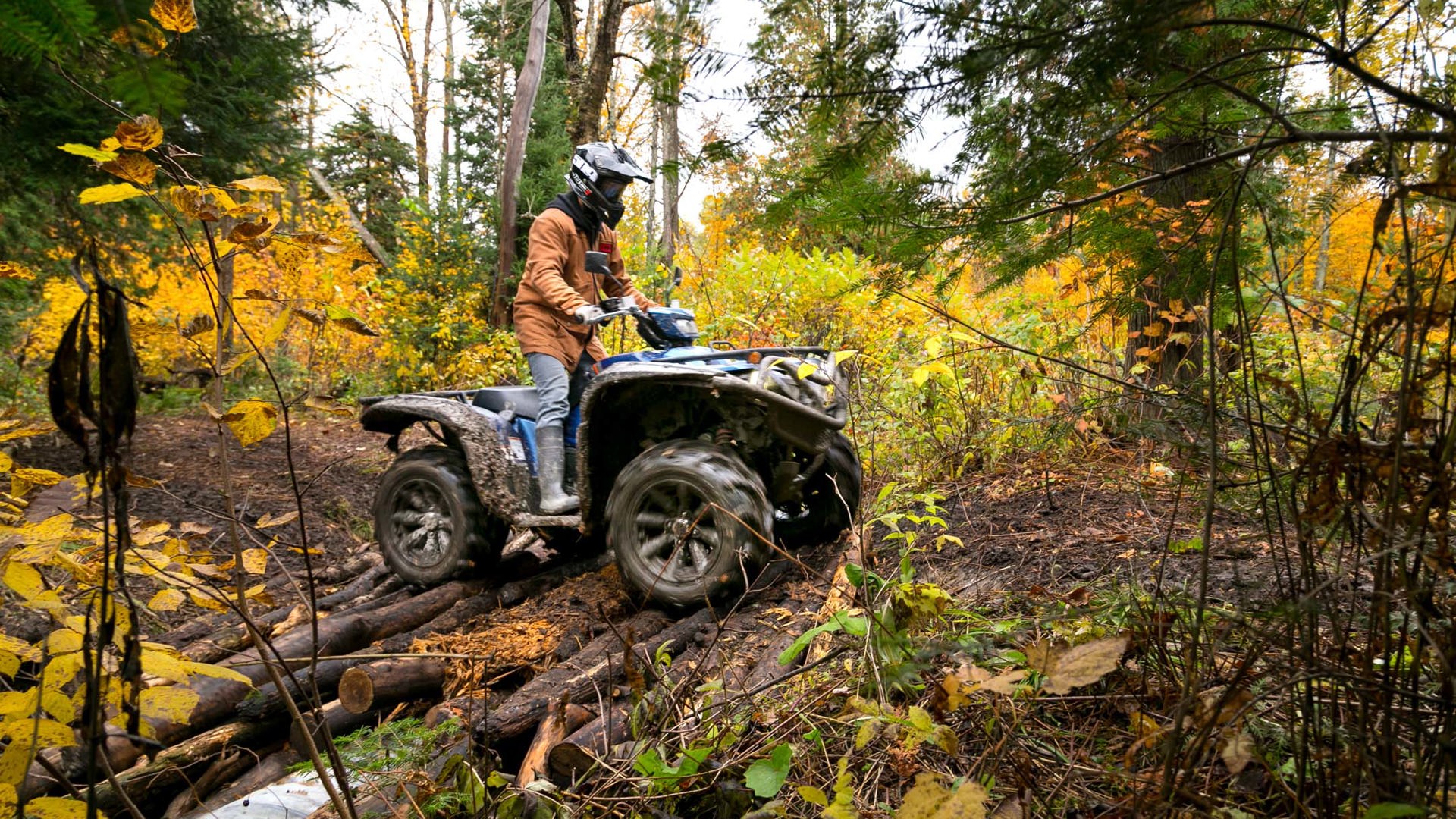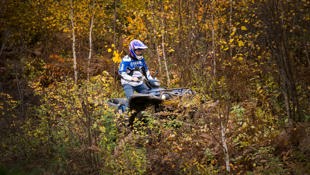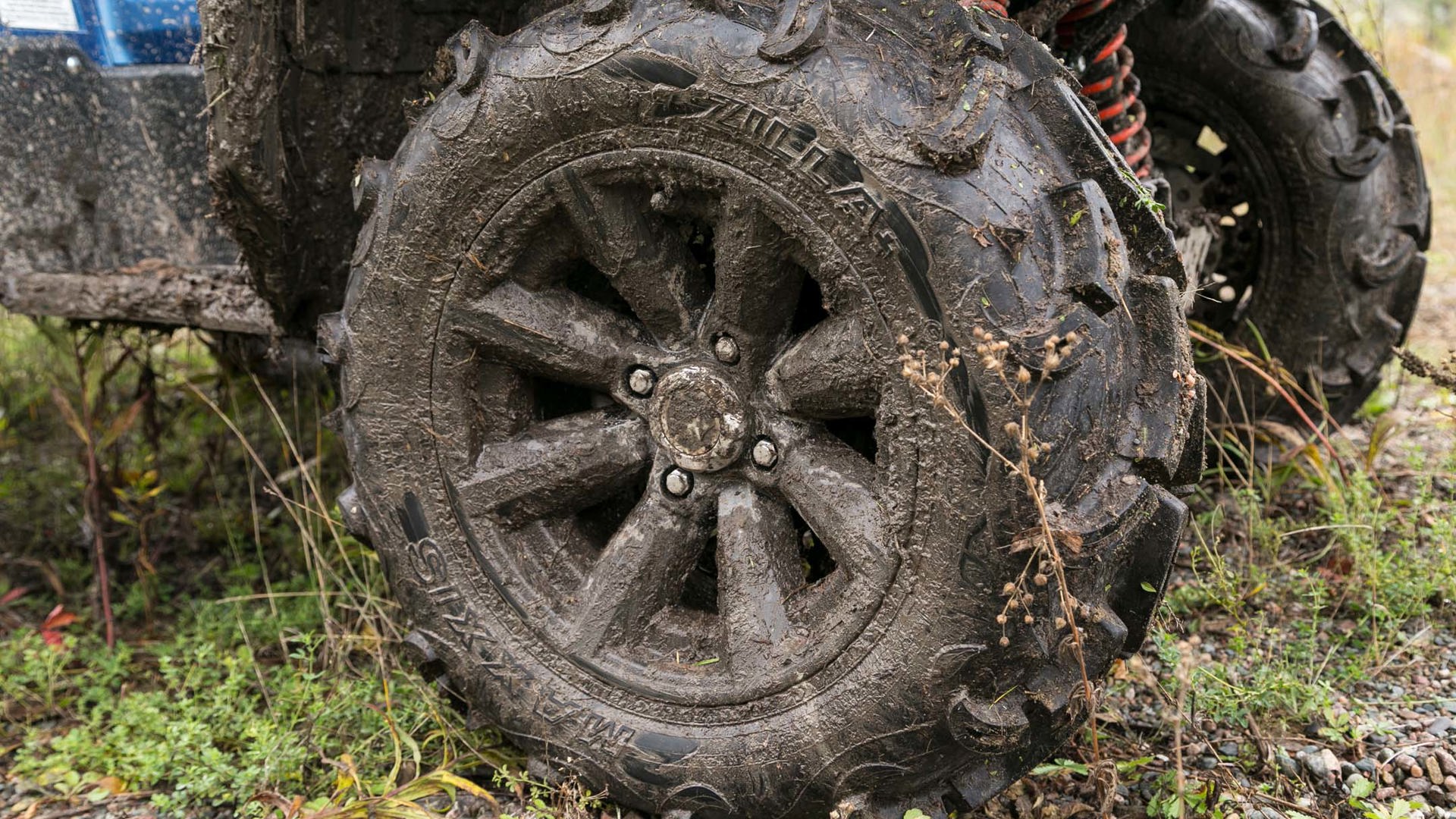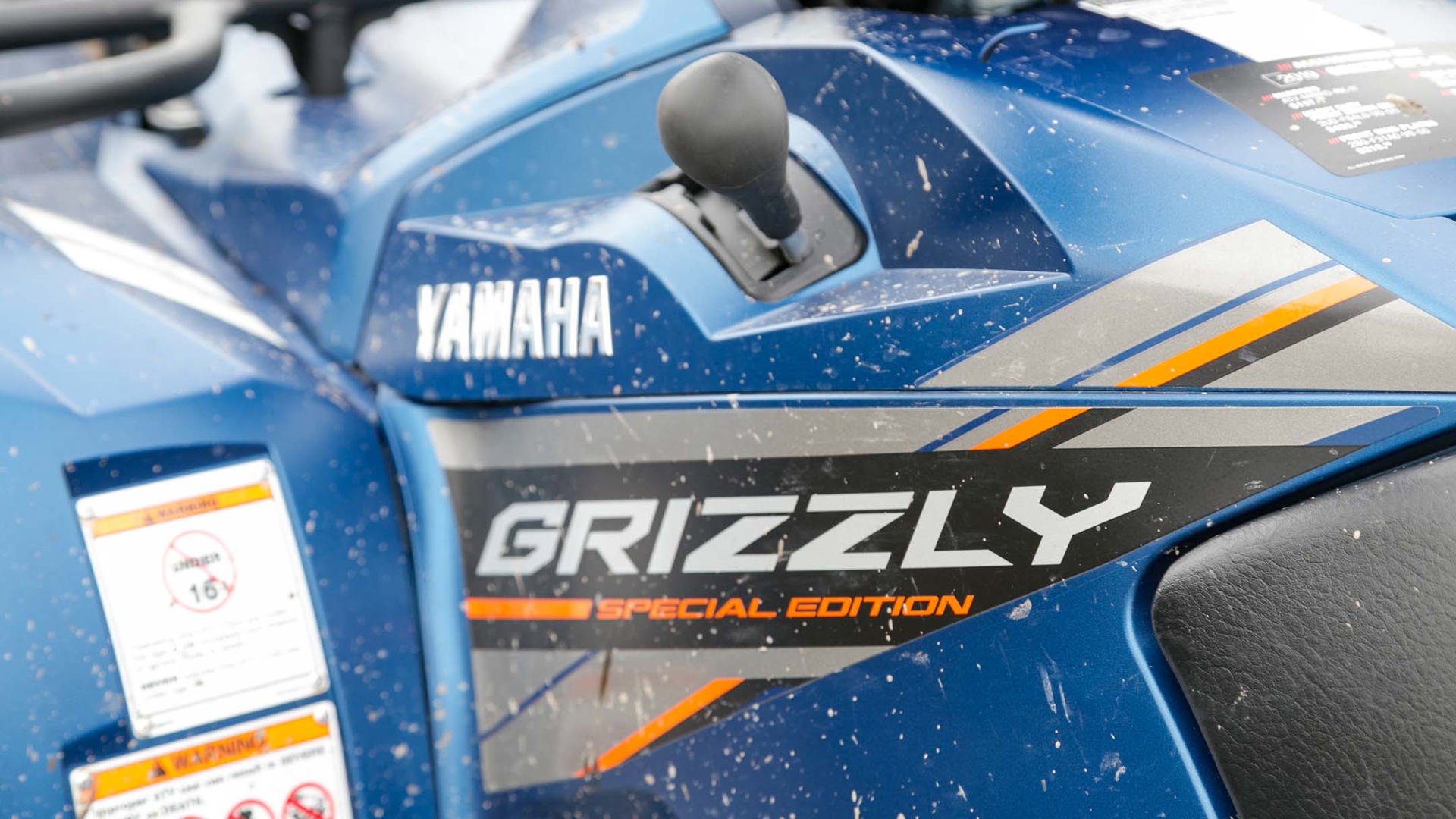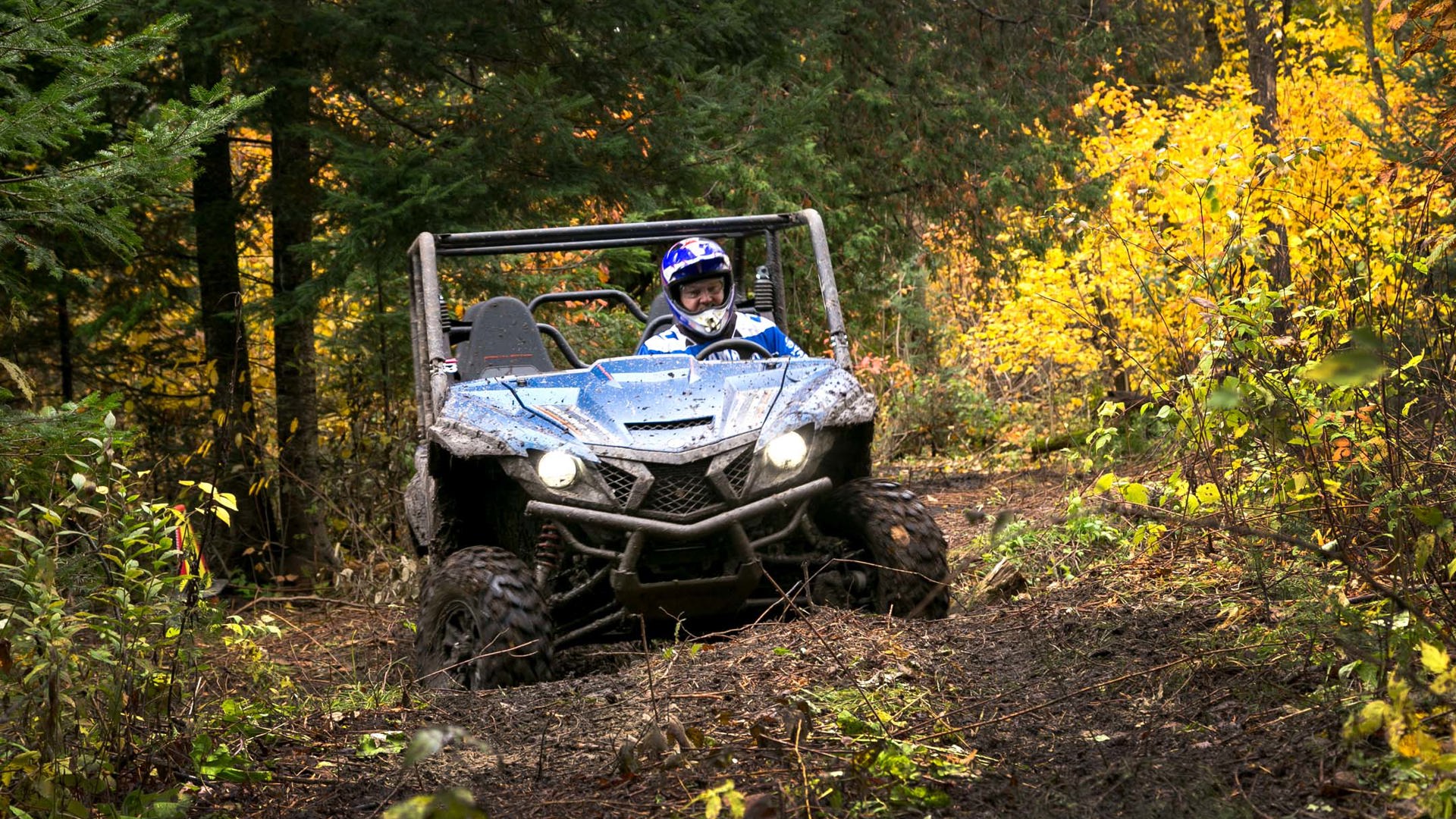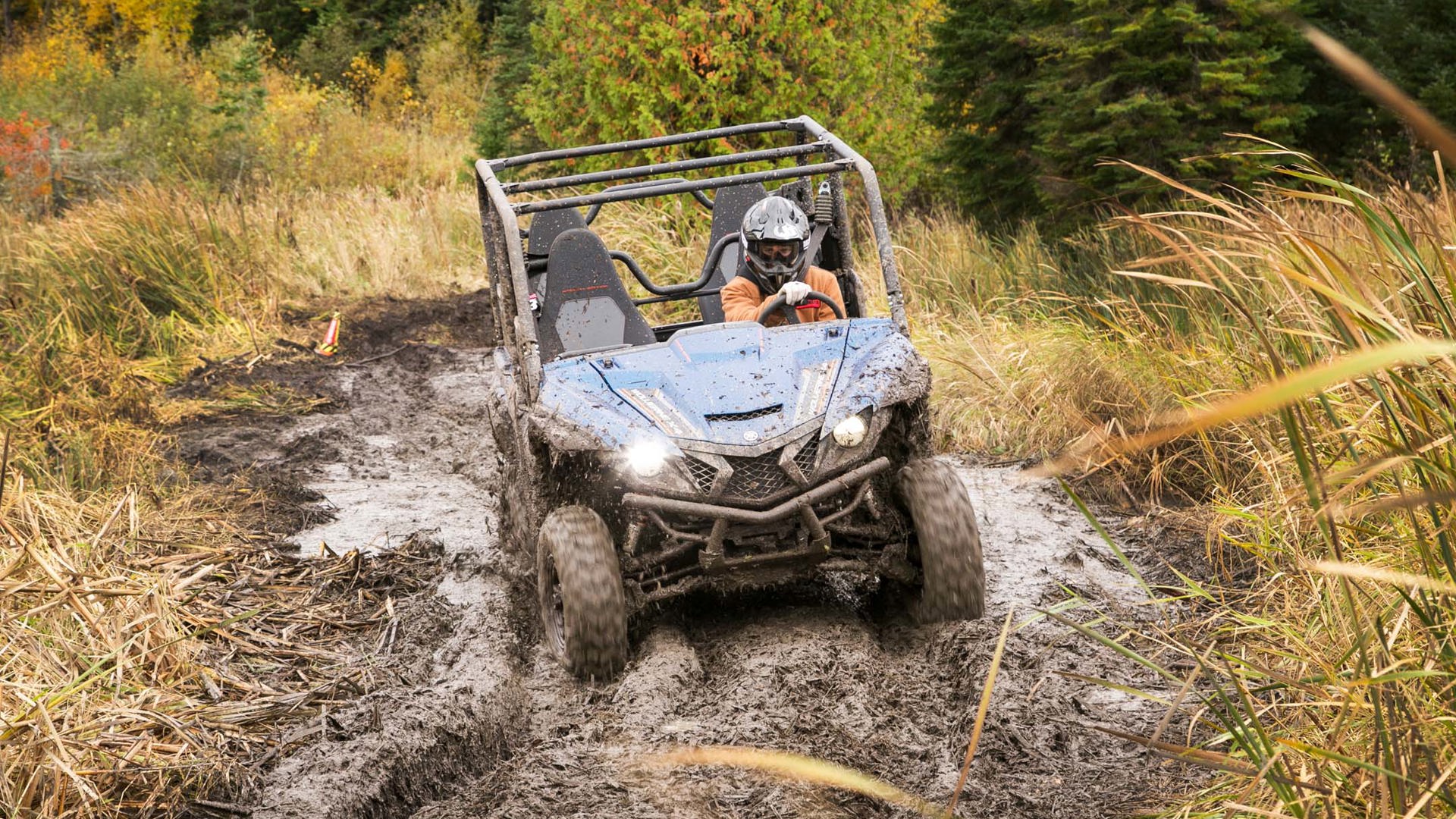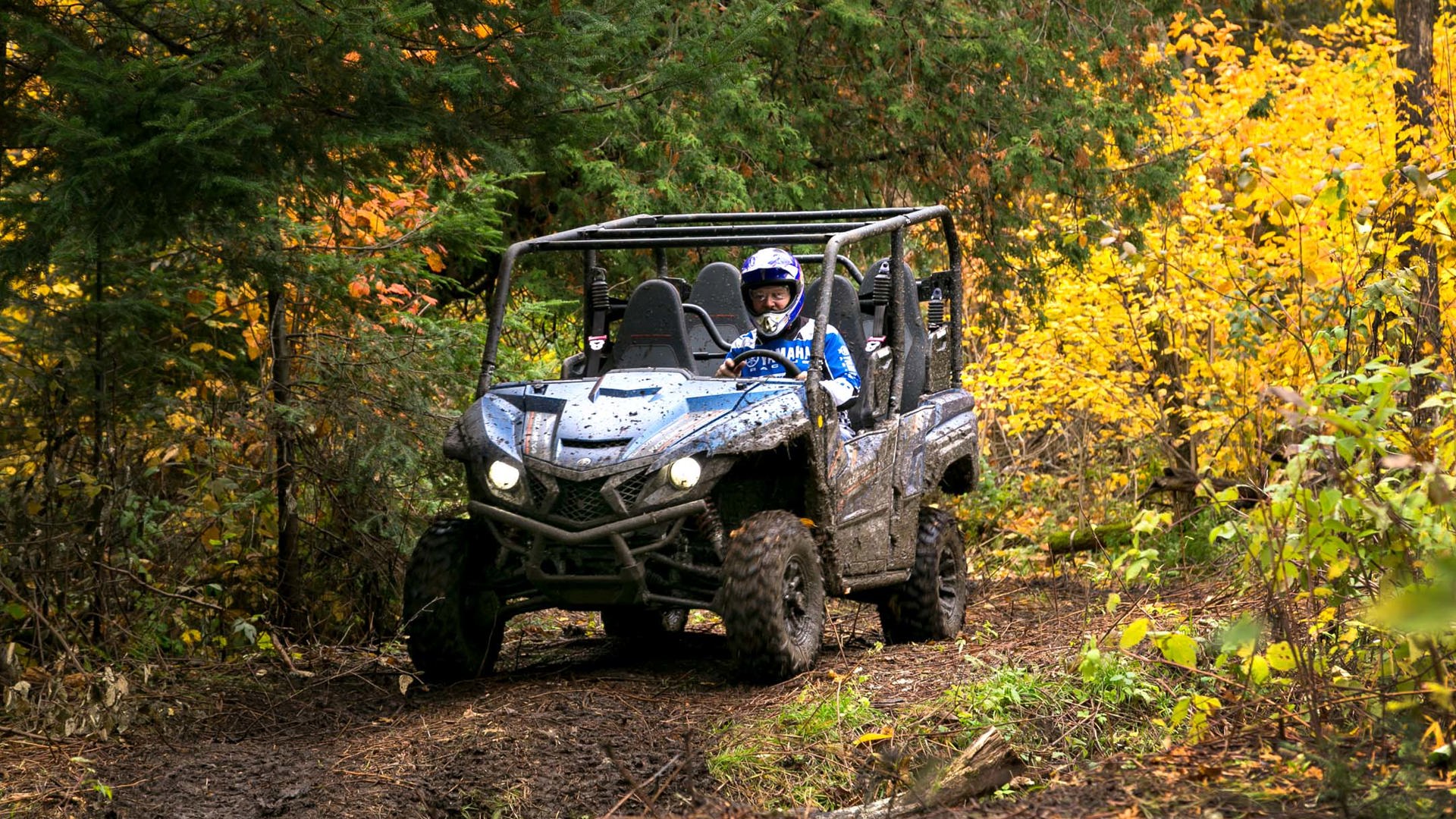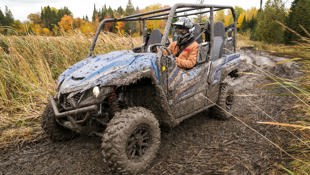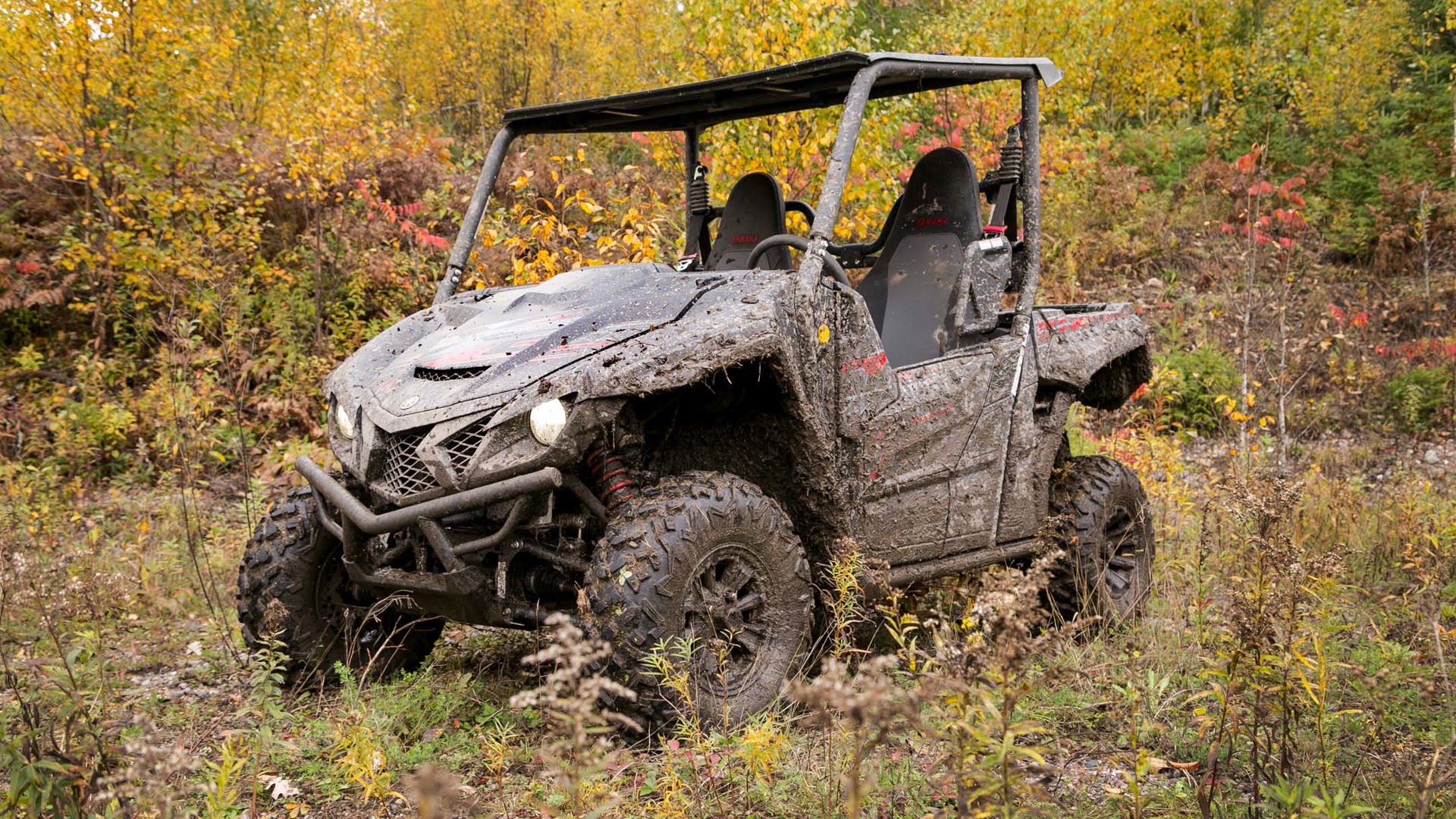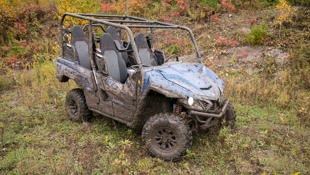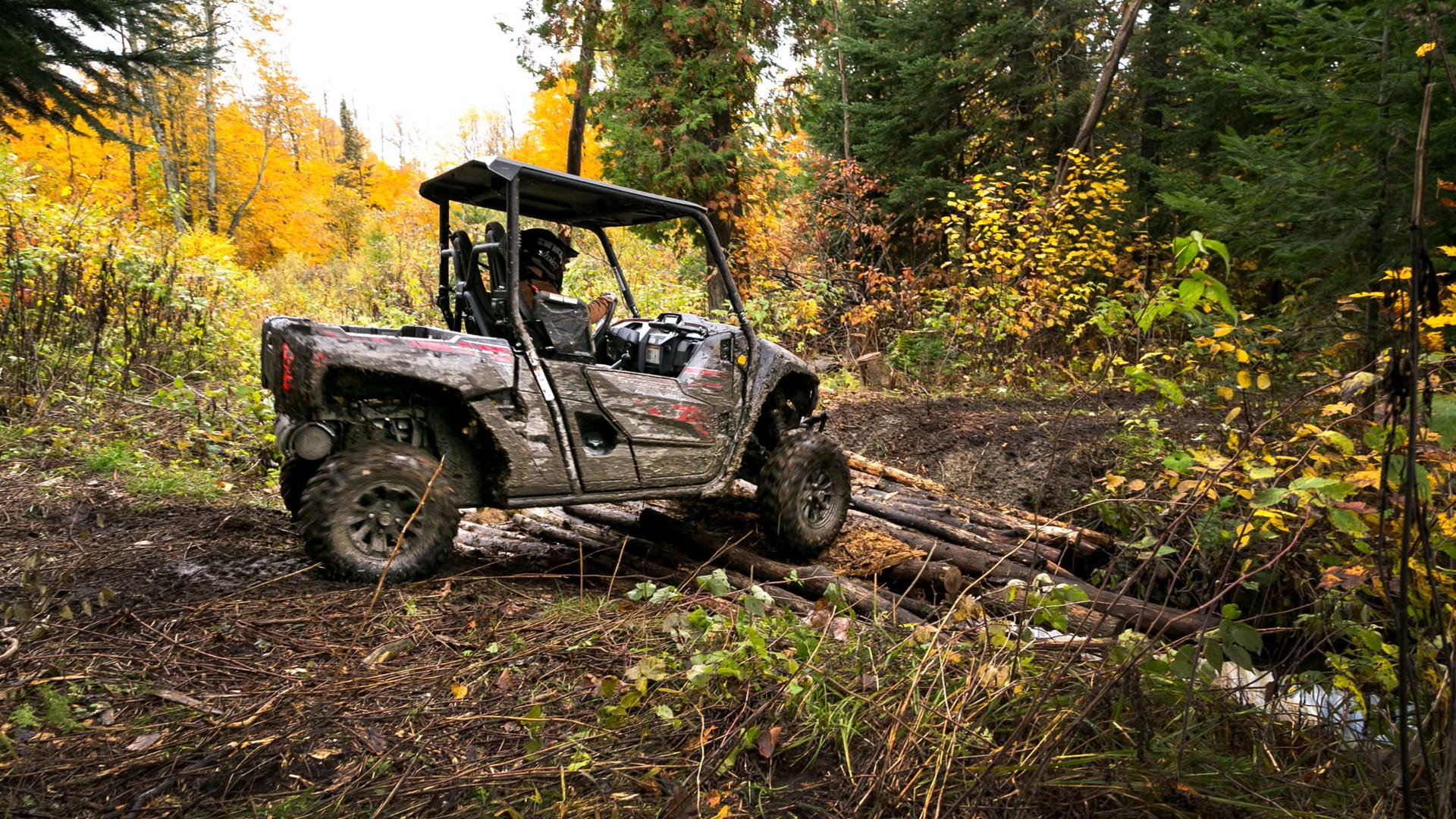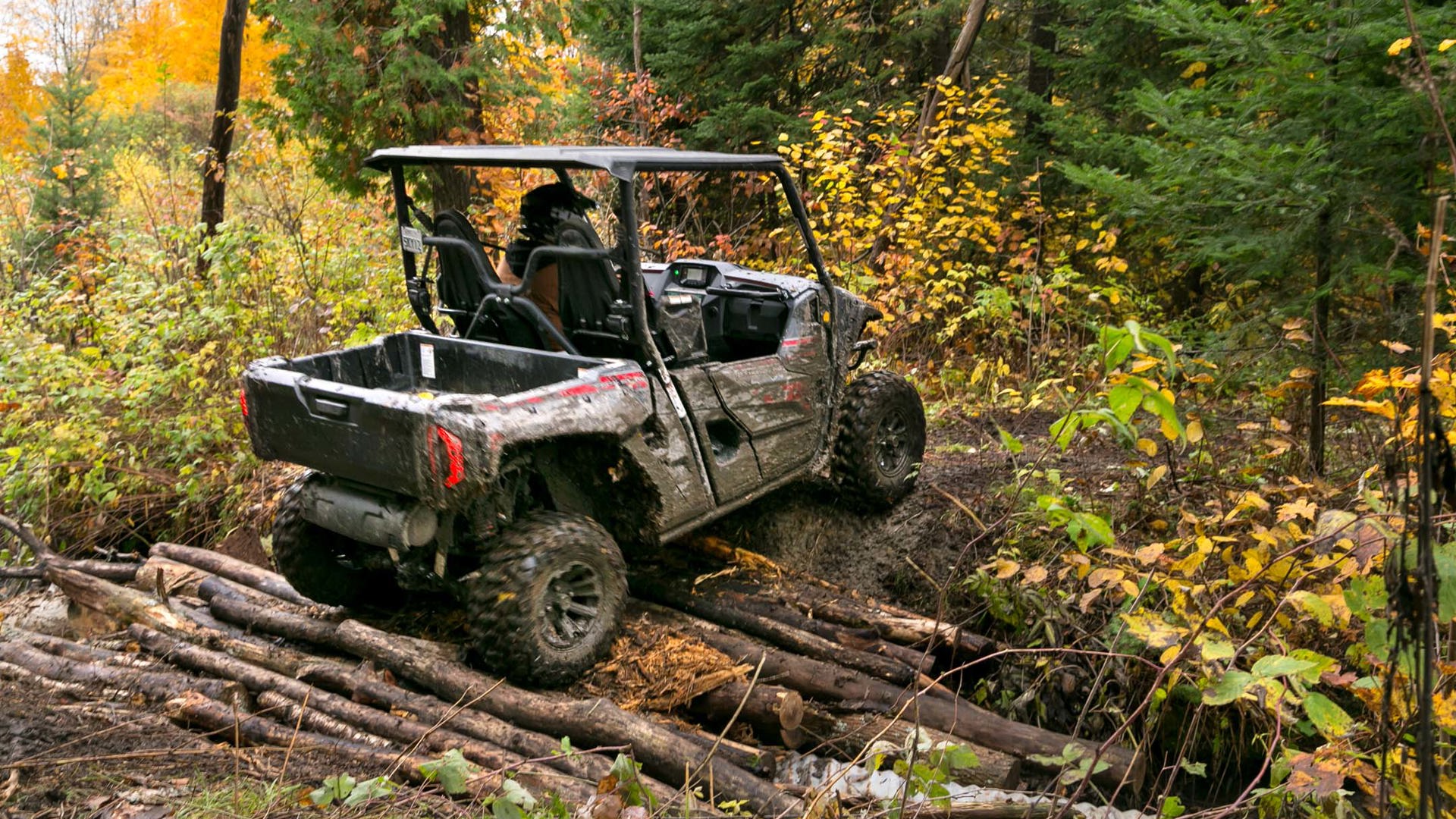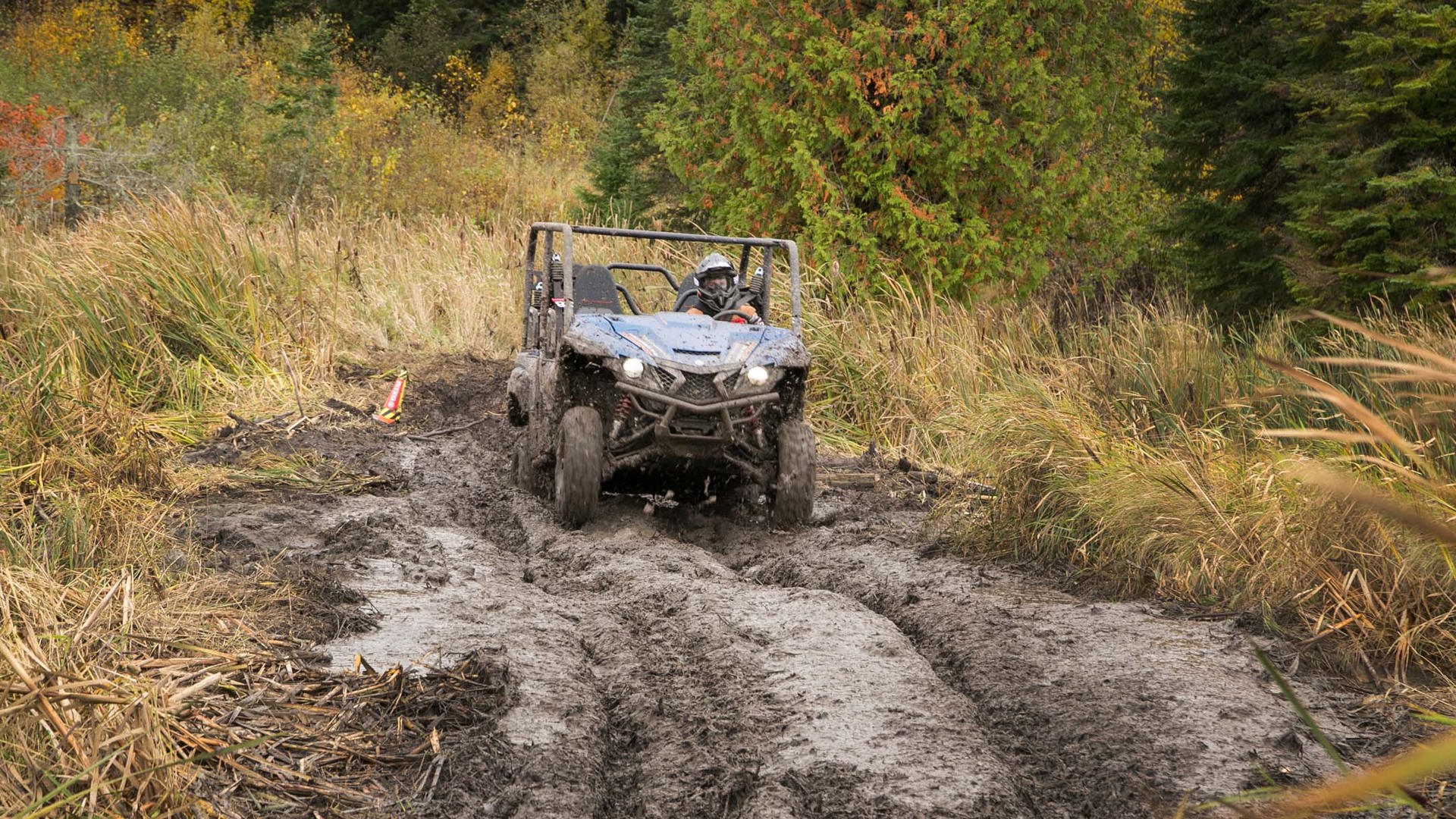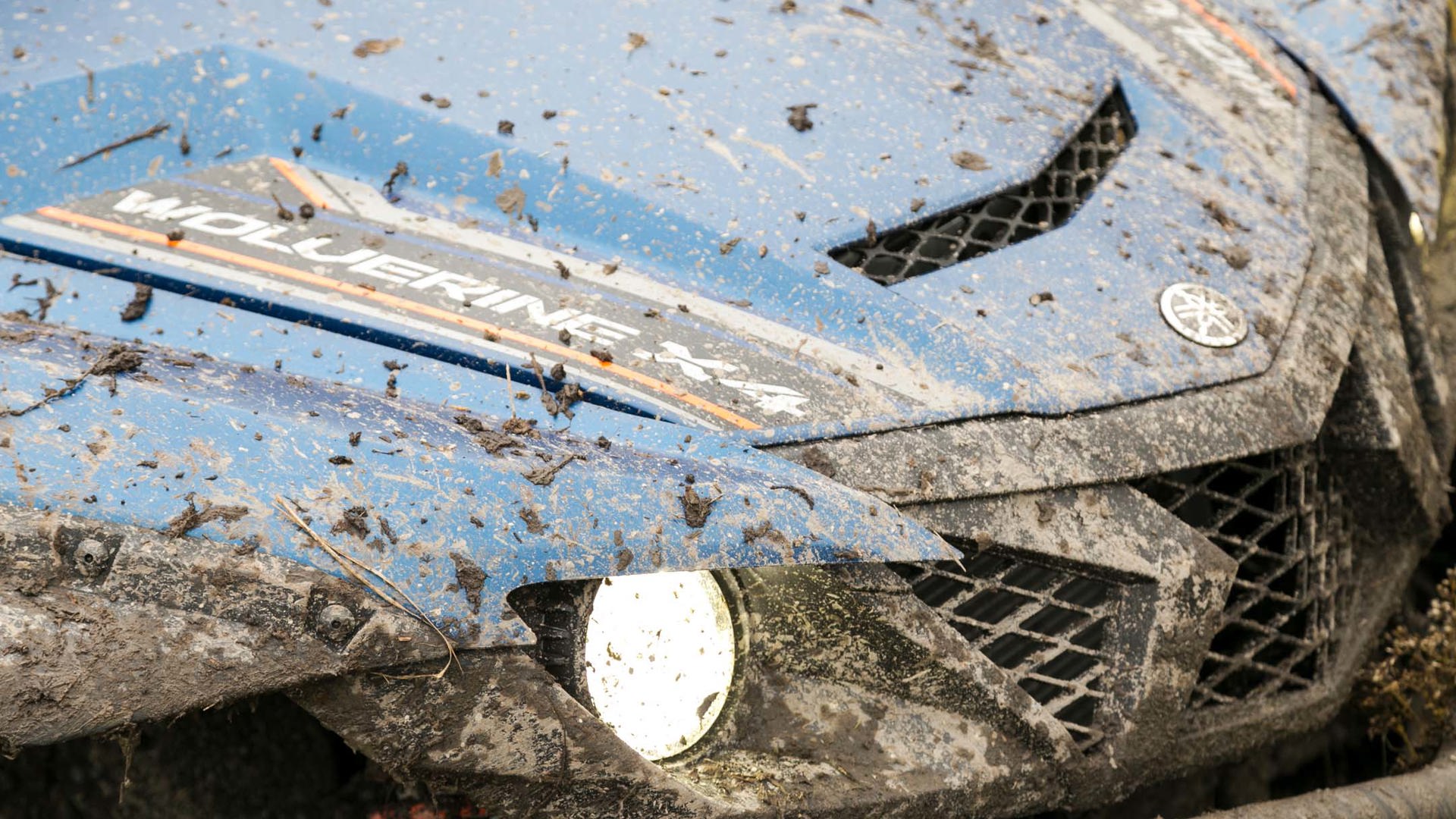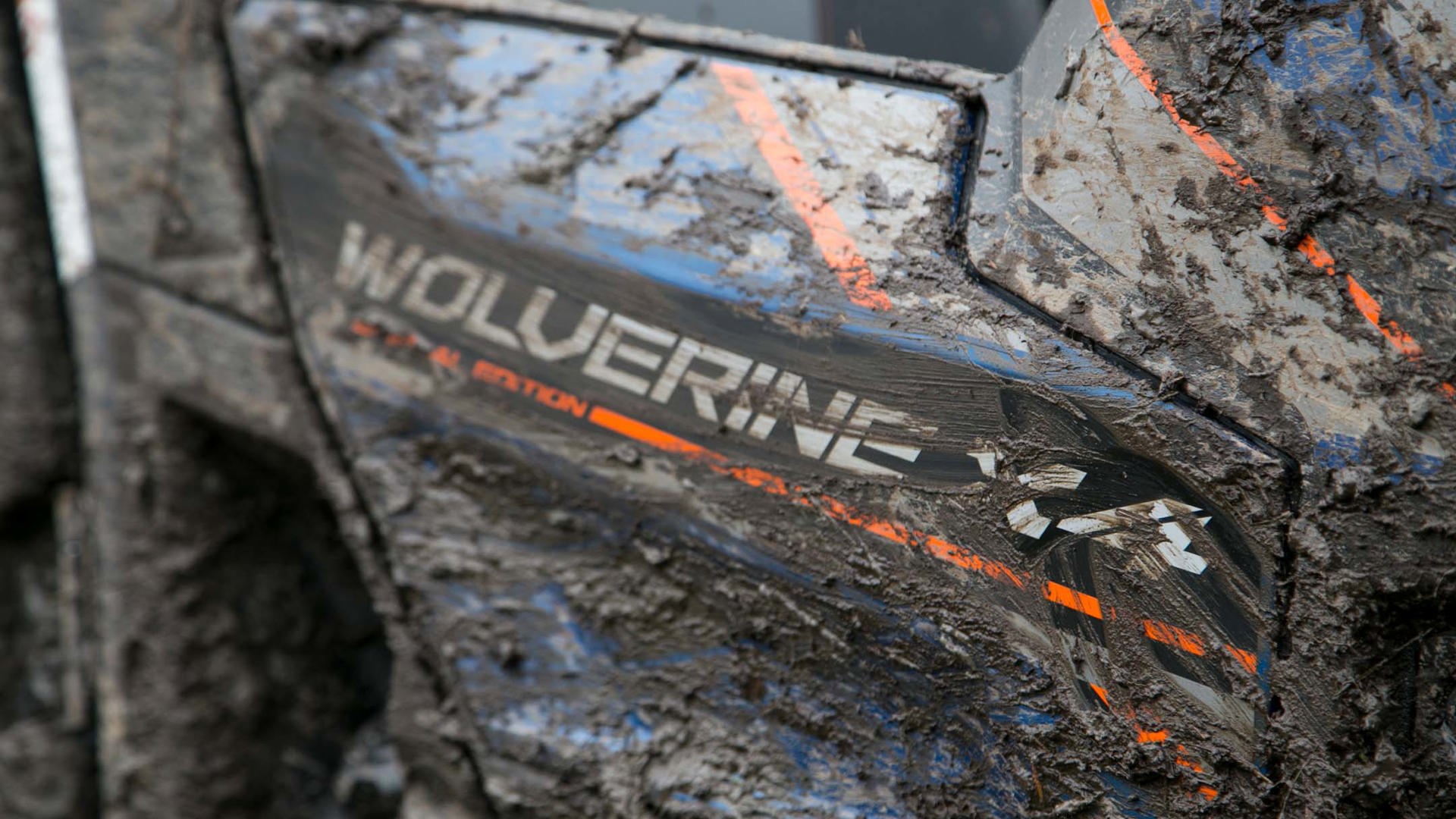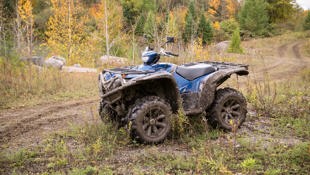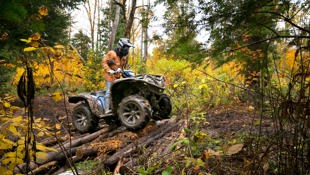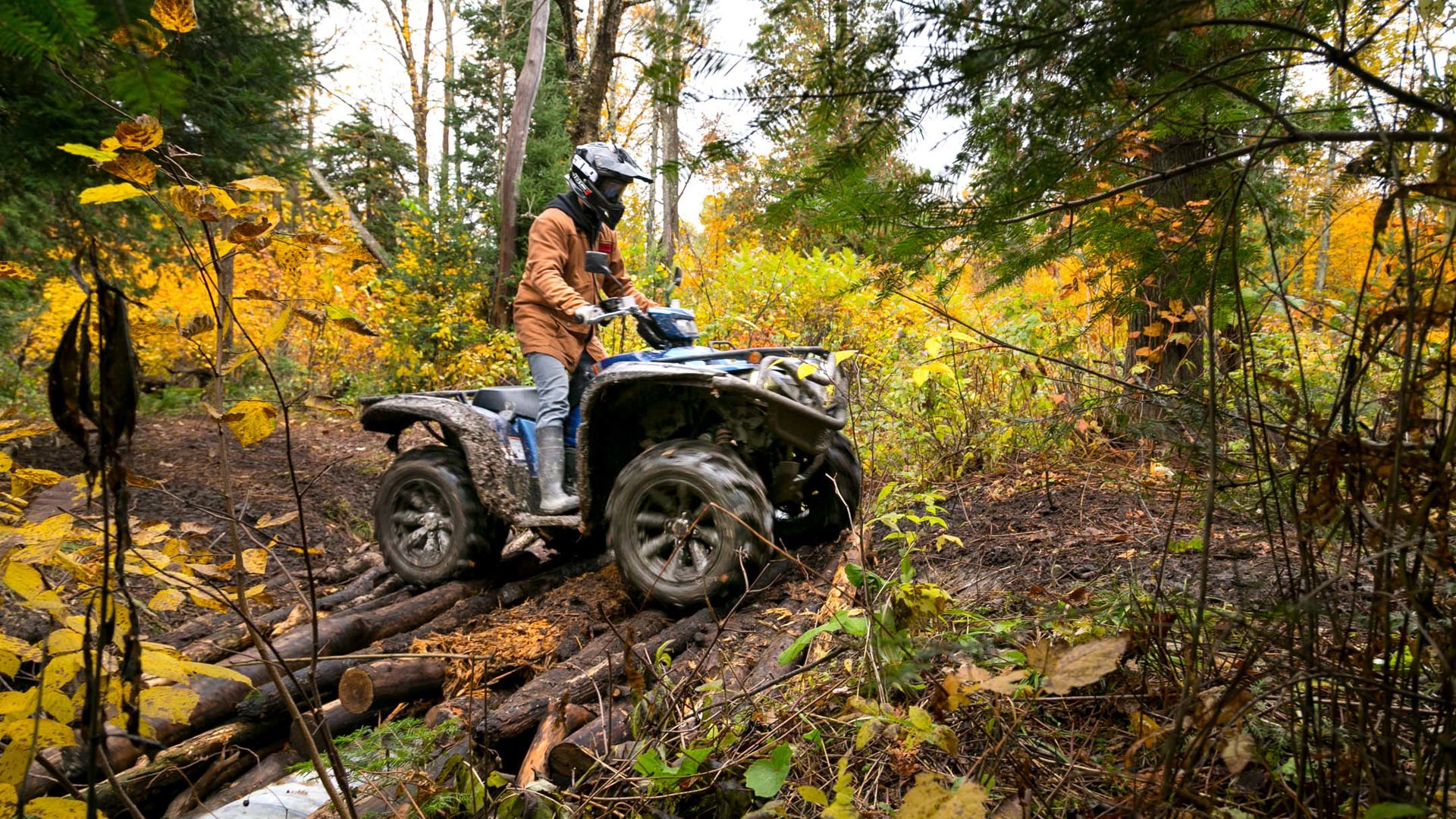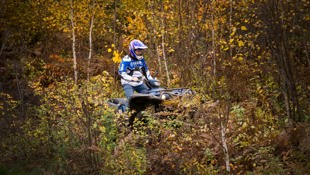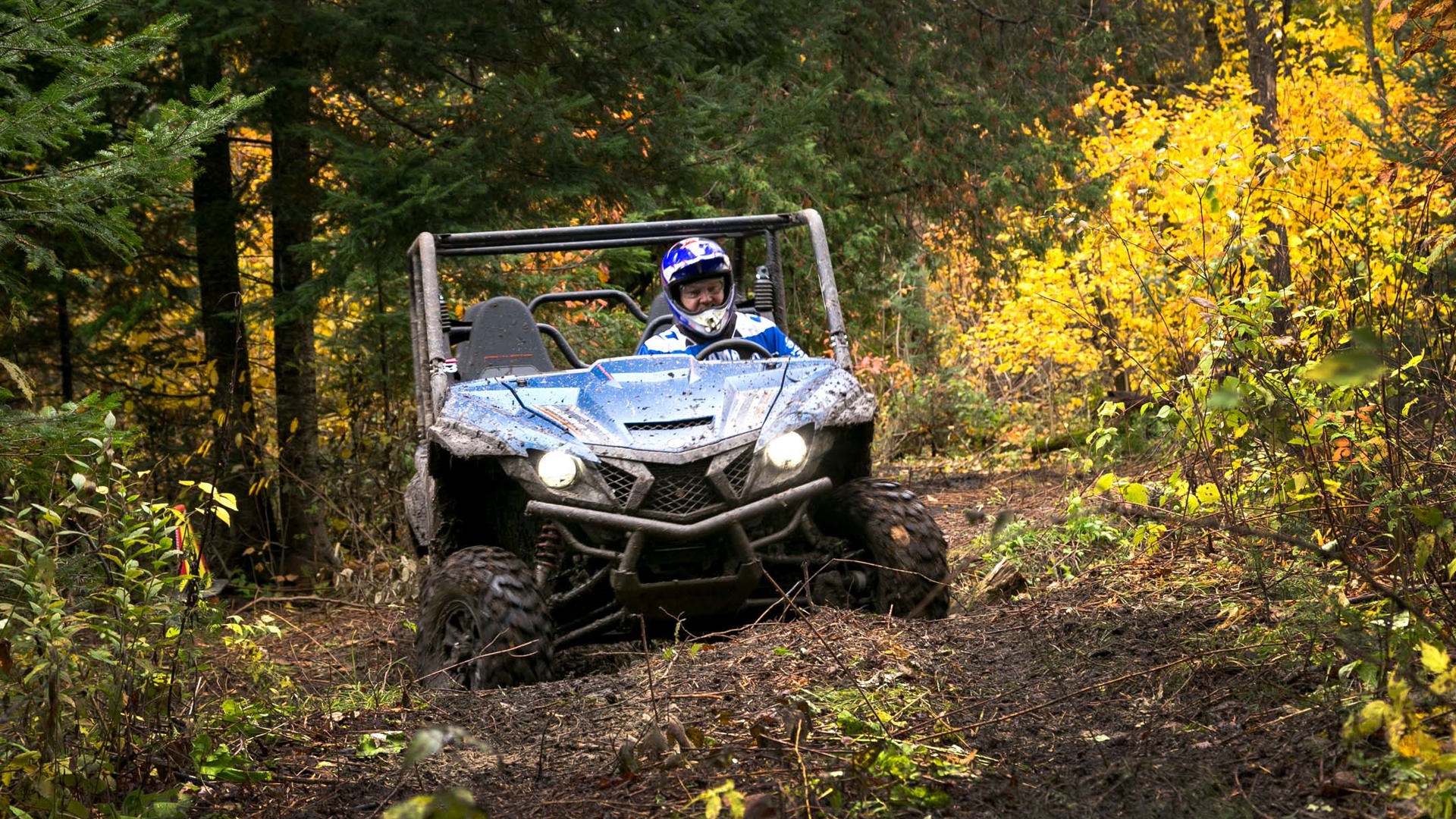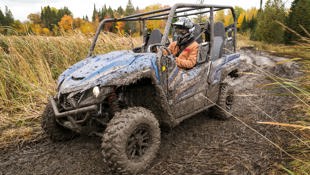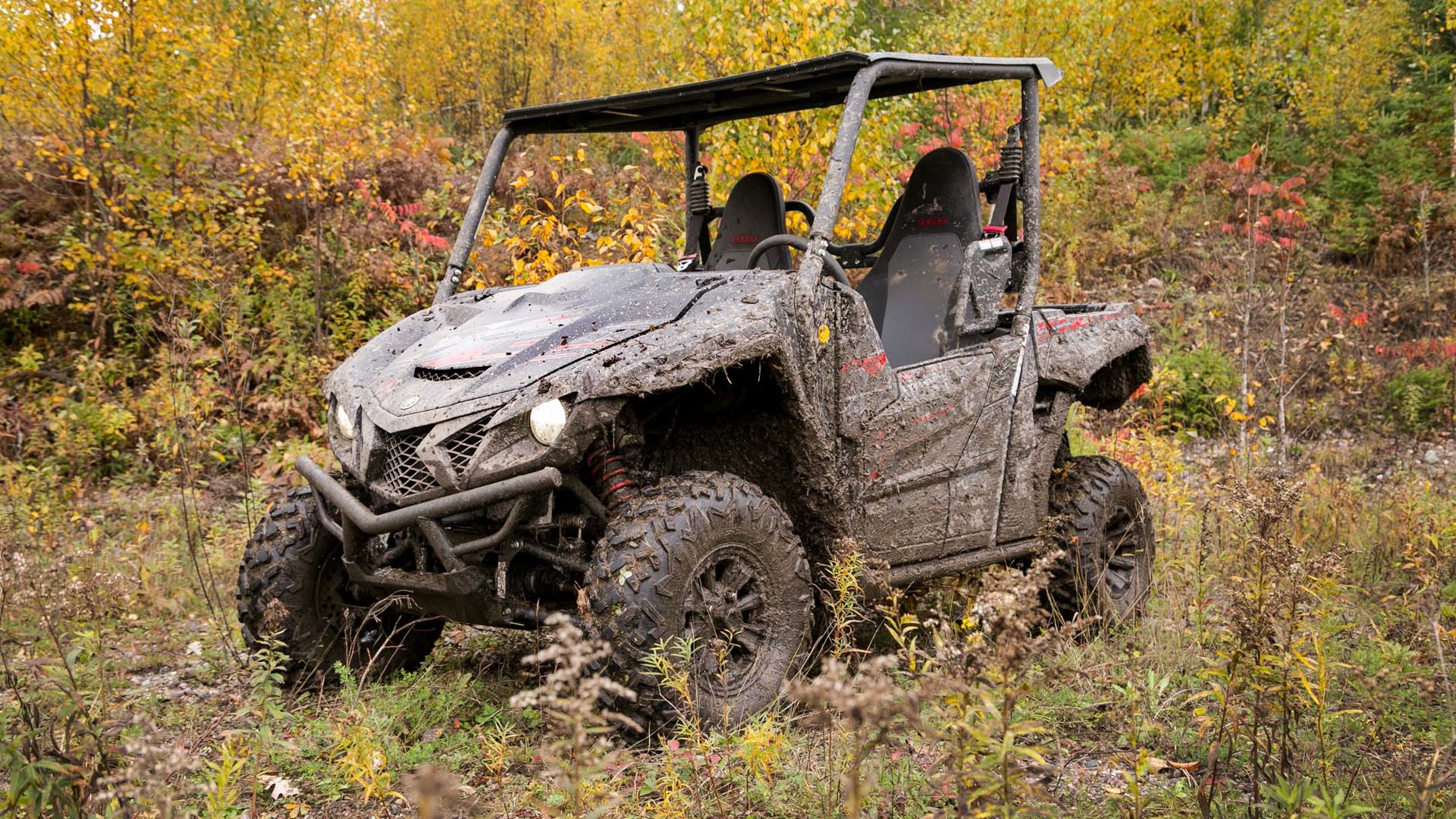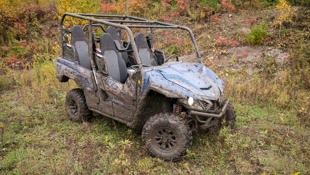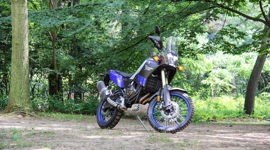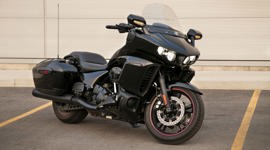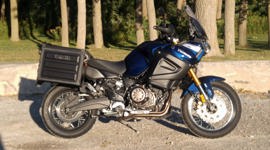Have you ever seen a kid who didn’t love to play in the dirt? One who didn’t find joy in splashing in puddles, or getting covered in mud?
[For] buyers who need their utility vehicle to balance work and play in equal measures.
Me neither.
Most kids grow out of that as they mature, but for those – like me – who don’t, there are ATVs and side-by-sides like the new models offered by Yamaha.
2019 Yamaha Grizzly
The Grizzly is the top dog– er, bear in Yamaha’s ATV lineup. In the 700 cc class, the Grizzly has earned the respect of riders for reliability and durability. For 2019 Yamaha has made a few significant updates to the venerable Grizzly line, adding both refinement and performance to the top-tier SE and LE trim models.
Most obvious are the gnarly looking tires fitted on the new aluminum alloy wheels. Measuring 27 inches, the oversized Maxxis Zilla rubber features dual-compound sidewalls and a wide, scoop-like tread pattern that digs its way through loose soil and mud as well as expected.
Part of our test loop through the rugged French River, Ontario, wilderness had us crossing over a boggy swamp. When the trail was first plotted for this adventure, it was at the end of a hot, fairly dry summer, but our event happened immediately following a series of consecutive rain storms, turning a good portion of our trail into a mud bog.
Being the childish idiots we are, my peers and I took great delight in stopping in the middle of the muck, then pinning the throttle in the interest of sending the airborne mud flying all over the hapless victims behind.
While none of the machines threatened to actually get stuck in the mud, the Grizzly was notably effortless, even in the worst of it, so yeah, those tires are a welcome addition.
27-inch tires are available on some of the larger litre-class quads from other manufacturers, but this is the first we’ve seen them offered on a 700 cc-class machine.
Of course, those tires can only do their job if they’re properly motivated, and Yamaha’s liquid-cooled 686 cc single manages that just fine. It’s been around in one capacity or another for quite a while, and for 2019 it’s been massaged to reportedly produce less noise and vibration. Without having last year’s model to compare for back-to-back testing, we’ll have to take their word on it for both accounts.
That said, the big single is a smooth and free-revving engine, delivering a particularly pleasing mid-range kick. In a few of the spots on our test loop, we were able to open up the machines a bit and the Grizz showed its willingness every time.
Yamaha has also tweaked the CVT transmission with a six percent gear reduction, resulting in snappier acceleration than before. The Grizzly offers 2WD, 4WD with limited slip, and 4WD with the rear differential locked.
At 320 kg (over 700 lb), the Grizzly is no lightweight Raptor ATV, but compared to the bulkier side-by-side units we also piloted, the relative nimbleness of the Grizzly made it fun and responsive over the varied terrain we experienced. The electric power steering (EPS) was subtle enough to still give good ground feel through the bars, but helping to take away any heaviness from the front end when steering through the tight confines of the forest trails.
The Grizzly can carry 50 kg up front and 90 kg on the back rack, and is rated to tow up to 600 kg (1,322 lb). That last figure puts it in line with Suzuki’s new KingQuad 750 and slightly ahead of Kawasaki’s Brute Force 750 despite its hot-rod V-twin engine.
Both Can-Am and Polaris make bigger, meaner, and more serious mud-specific beasts with full-litre displacement and significantly more power, but those units weigh a lot more and ring in at least a few grand dearer.
Yamaha’s new Grizzly EPS SE does a great job of bridging the gap between affordable, utilitarian machines, and the wild-and-woolly litre-quads, adding in the brand’s legendary reliability, to boot.
Specs and Pricing
2019 Yamaha Grizzly EPS SE: $12,999
Engine: Liquid-cooled, SOHC, 686 cc single-cylinder
HP/Torque: N/A
Minimum Ground Clearance: 300 mm
Wet Weight: 320 kg
Fuel Capacity: 18 L
Towing Capacity: 600 kg
2019 Yamaha Wolverine
As they’re doing with the Grizzly, Yamaha seems to be positioning the Wolverine side-by-side ute right in the middle of a vast and diverse SXS category.
Recognizing a need for a SXS that can do equal parts fun and work, the Wolverine (in either two-door X2 or four-door X4 format) brings aggressive styling, sporty bucket seats, and decent ground clearance to the outdoor playground, with a serious helping of functional capability for more laborious tasks.
Rated at a 907 kg (2,000 lb) tow rating and a payload capacity of 272 kg (600 lb), the Wolverine compares favourably with Honda’s more utilitarian Pioneer 1000 or Kawasaki’s Mule (completely trumping the sporty Kawi Teryx). And the one-hand, truck-style tailgate handle is a welcome function where many of the competitors still use two-latch units.
Yamaha manages to deliver this utility despite its 847-cc Parallel-twin engine being down in displacement to the Honda’s Pioneer 1000 as well as the big bore units from Can-Am or Polaris.
At one point, my colleague from Canada Moto Guide and I piled into the back seat of the X4 and were chauffeured around the trail by one of the event staff. While the backseat is not nearly as much fun as the driver’s seat, there was ample space for us, and the Wolverine never seemed laboured by its passenger ballast, whether blasting along a straight bit of trail, climbing over obstacles or plowing through the ooze.
Yamaha’s reps are particularly proud of the X4’s full-sized rear seats that can be slid and folded out of the way, expanding the practical space of the cargo box behind.
What really helps the Wolverine stand out from its peers is its relative refinement. The engine is smooth-running compared to some of the more agricultural-feeling SXS units I’ve tried. What’s more, Yamaha claims their efforts to keep the engine hushed have resulted in the quietest-running SXS in the category. The reality is, a conversation inside the Wolverine is entirely possible without shouting at one another.
The Side-by-Side market seems to be expanding into increasingly specialized, high-end segments (just look at Can-Am’s Maverick line-up that includes various engine choices and suspension / tire set ups designed for rock crawling or mud-slinging). Yamaha has picked a middle-ground with the Wolverine that should appeal to a number of buyers who need their utility vehicle to balance work and play in equal measures.
Specs and Pricing
2019 Yamaha Wolverine X2 R-Spec EPS SE: $19,499
2019 Yamaha Wolverine X4 EPS SE: $21,499
Engine: Liquid-cooled, DOHC, 847 cc parallel-twin-cylinder
HP / Torque: N/A
Minimum Ground Clearance: 300 mm (X2); 273 mm (X4)
Wet Weight: 720 kg
Fuel Capacity: 35 L
Towing Capacity: 907 kg
